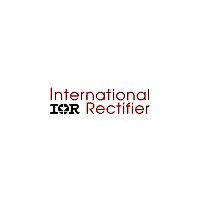IRPLCFL3 International Rectifier, IRPLCFL3 Datasheet - Page 3

IRPLCFL3
Manufacturer Part Number
IRPLCFL3
Description
KIT DESIGN CFL TRIAC DIMMING
Manufacturer
International Rectifier
Datasheet
1.IRPLCFL3.pdf
(12 pages)
Specifications of IRPLCFL3
Main Purpose
Lighting, Ballast Control
Utilized Ic / Part
IR2156
Lead Free Status / RoHS Status
Contains lead / RoHS non-compliant
Secondary Attributes
-
Embedded
-
Primary Attributes
-
Other names
*IRPLCFL3
In this system the front end of the ballast has been designed so that when the triac in
the dimmer has fired, it will remain on continuously until almost the end of the mains
half-cycle. In addition to this there is circuitry that detects the firing angle of the triac and
adjusts the lamp current by increasing the switching frequency hence the controlling
light output depending on the level set by the dimmer.
It should be noted that if the dimmer is set too low the triac will never fire when a
capacitive load is connected and also when the ballast is running and the dimmer is
turned too low there will be insufficient bus voltage for the ballast to be able to operate.
Because of these factors it is impossible for the ballast to operate over the complete
range of adjustment of the dimmer. There will also be some hysteresis so when the
ballast is being dimmed down and reaches the point where the lamp goes out, the
dimmer has to be turned back up some way before the lamp will strike again.
BLOCK DIAGRAM
FUNCTIONAL DESCRIPTION
When the dimmer triac is fired the current that flows must remain above the holding
current until a point close to the end of the mains half cycle at which the voltage is very
low. This is achieved by ensuring that the ballast draws current exceeding the holding
current of a standard power triac as used in most dimmers with a charge pump circuit
consisting of C5 and C6 in conjunction with D1 to D4 (not to be confused with the
charge pump that supplies the Vcc). When the ballast is operating the point between L2
and C15 swings low when Q2 is on, this charges C5 through D2 during the positive half-
cycle of the mains voltage. When Q2 switches off and Q1 switches on the voltage
between L2 and C15 swings high causing C6 to be discharged through D1 into the
storage capacitor C3. During the negative half-cycle of the mains voltage, the opposite
happens with C6 and C4. The result is that a continuous series of current pulses are
drawn from the input during the period when the triac has been fired until close to the
end of the mains half-cycle. The inductor L1 ensures that a continuous current is drawn
from the input and that the triac does not switch off between pulses. In order to do this
the inductor must store energy when current is being drawn via the charge pump and
release this energy during the period when C5 or C6 is discharging. When the ballast is
dimmed the frequency increases and so the current in C5 or C6 also increases,
ensuring that there will be sufficient to keep the triac switched at all dim levels.
IRPLCFL3
Domestic Dimmer
Triac Based
Doubler and Charge Pump
Triac firing point sense
Control Stage
VCC
VDC
RPH
CPH
NC
RT
CT
1
2
3
4
5
6
7
14
13
12
11
10
9
8
COM
VB
HO
VS
LO
CS
SD
Lamp Arc Current Sense
Output Stage
(with auxilary filament
heating windings)
Lamp
3











